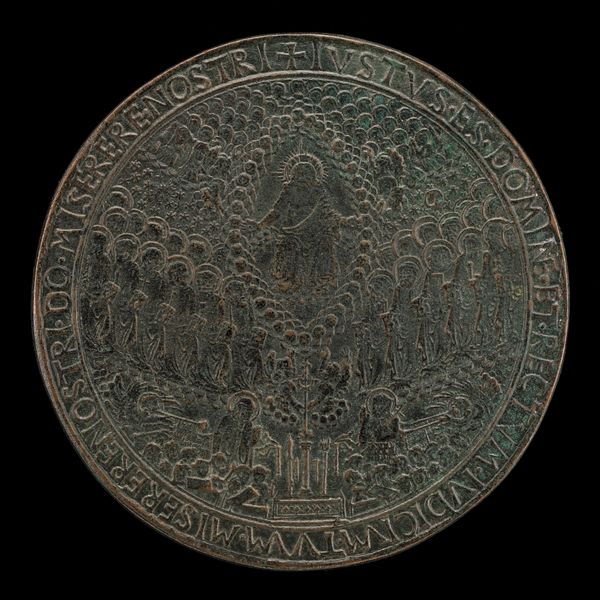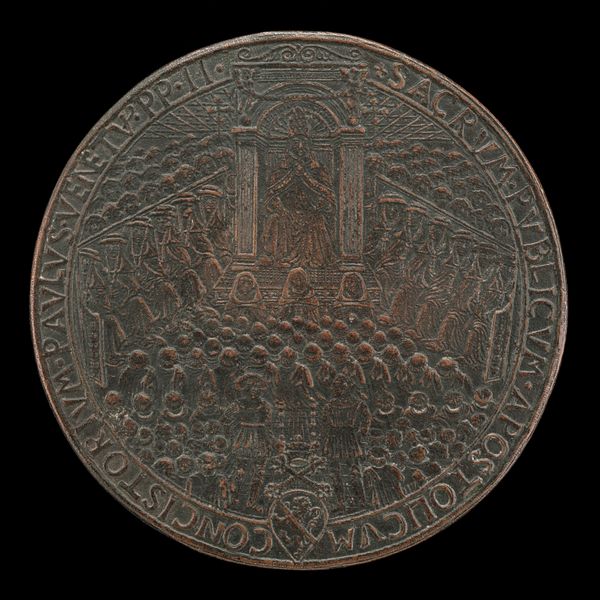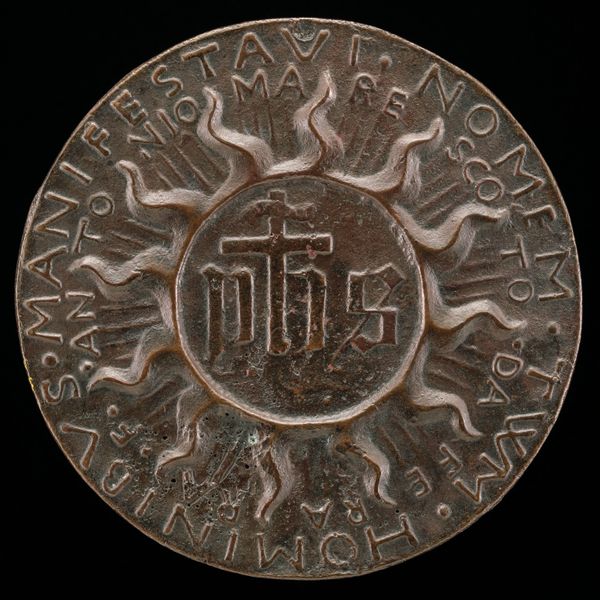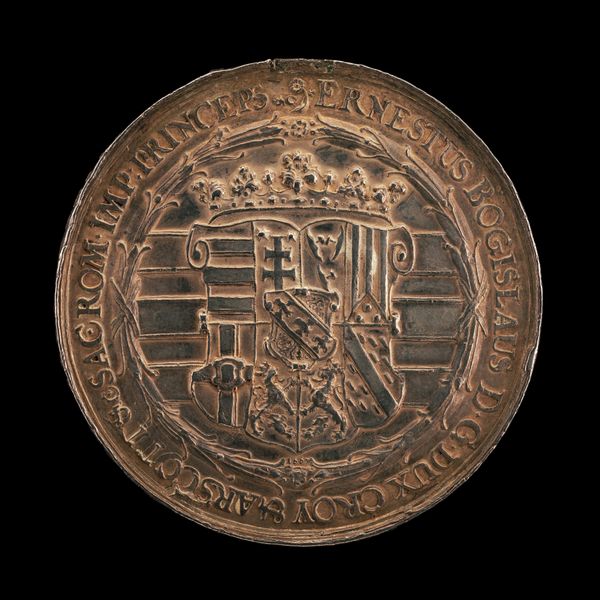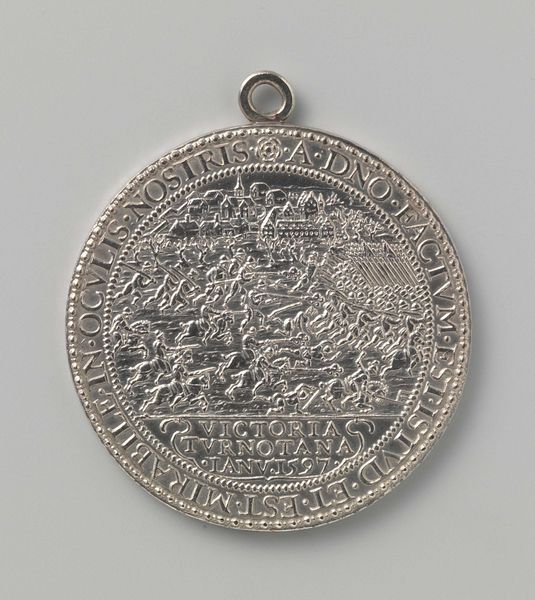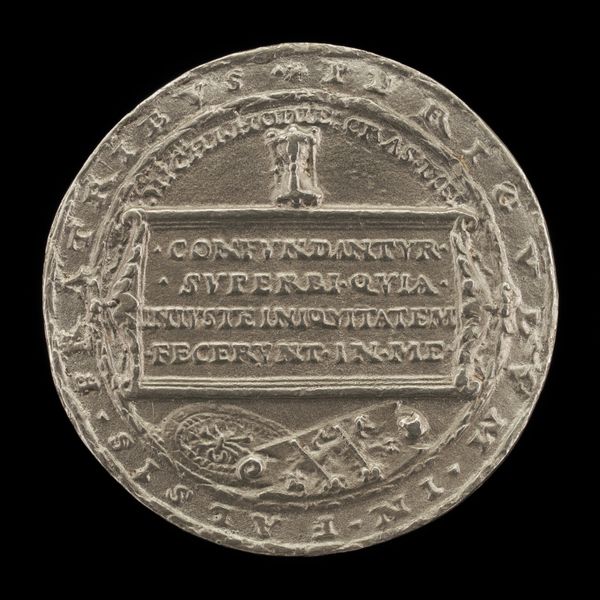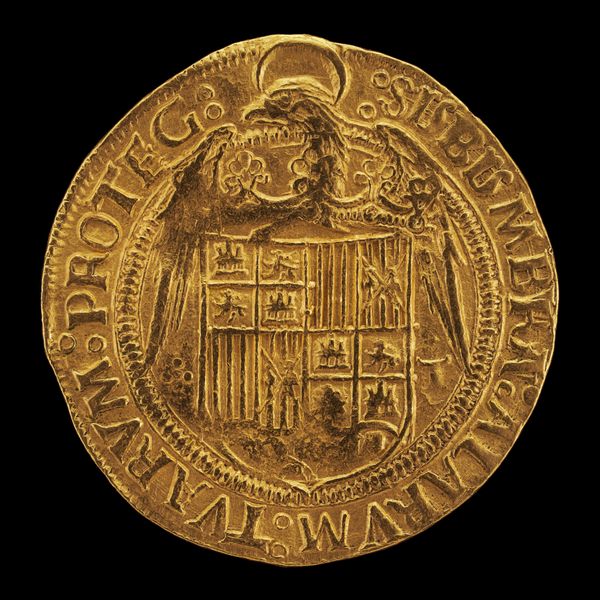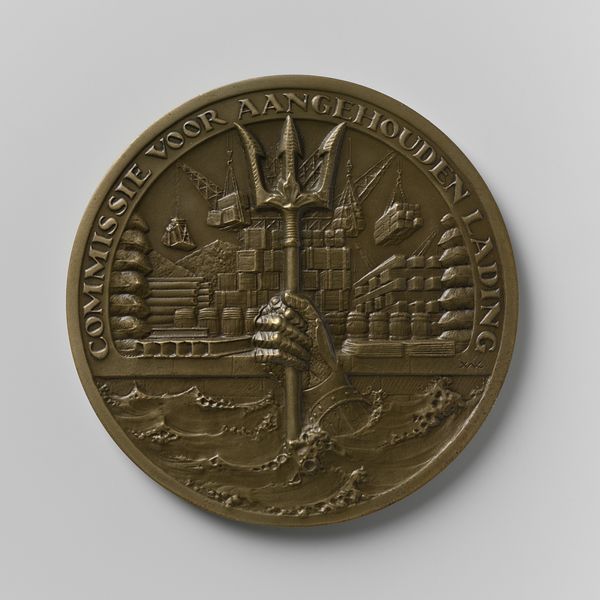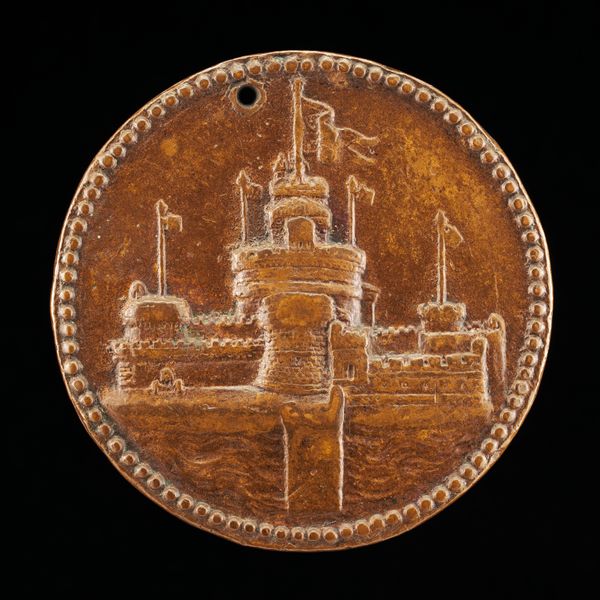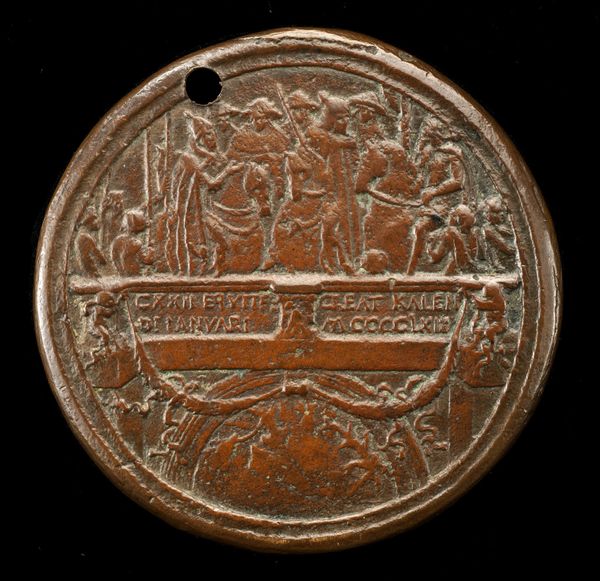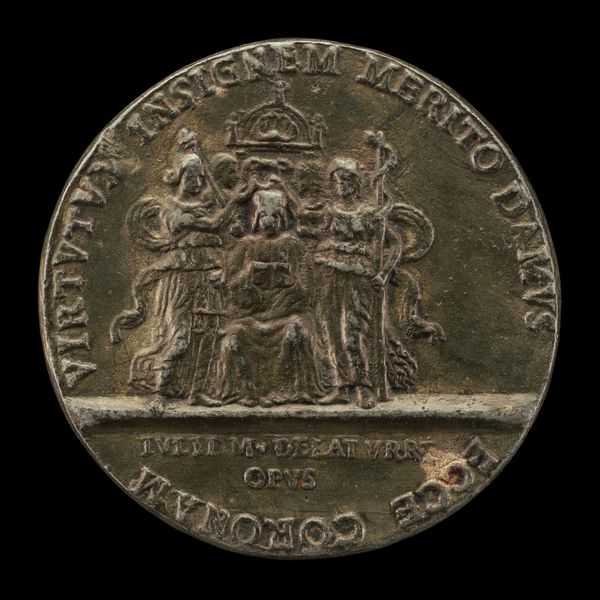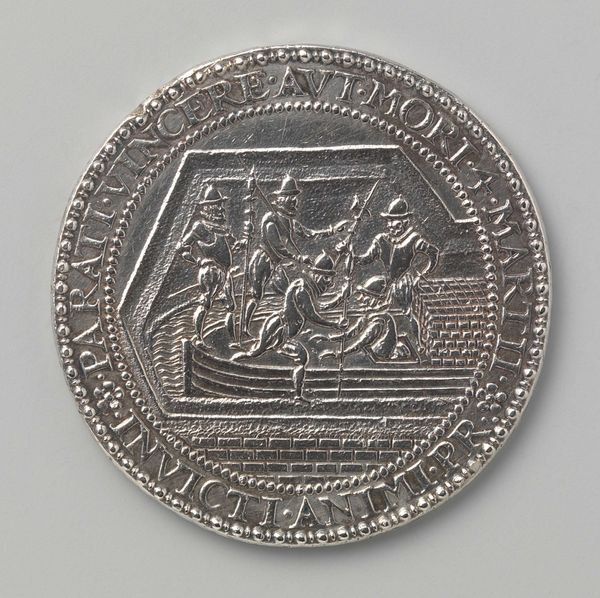![The Castle of Rimini [reverse] by Matteo de' Pasti](/_next/image?url=https%3A%2F%2Fd2w8kbdekdi1gv.cloudfront.net%2FeyJidWNrZXQiOiAiYXJ0ZXJhLWltYWdlcy1idWNrZXQiLCAia2V5IjogImFydHdvcmtzL2JjMmU3MjliLTYxNTYtNDRhOS1hMzVjLWMxYWQ4ZWIzYTlmZi9iYzJlNzI5Yi02MTU2LTQ0YTktYTM1Yy1jMWFkOGViM2E5ZmZfZnVsbC5qcGciLCAiZWRpdHMiOiB7InJlc2l6ZSI6IHsid2lkdGgiOiAxOTIwLCAiaGVpZ2h0IjogMTkyMCwgImZpdCI6ICJpbnNpZGUifX19&w=3840&q=75)
relief, bronze, sculpture
#
medal
#
sculpture
#
relief
#
bronze
#
sculpture
#
cityscape
#
italian-renaissance
Dimensions: overall (diameter): 8.46 cm (3 5/16 in.) gross weight: 294.75 gr (0.65 lb.) axis: 12:00
Copyright: National Gallery of Art: CC0 1.0
Editor: Here we have Matteo de' Pasti’s bronze relief, “The Castle of Rimini”, made in 1446. The round format and detailed cityscape give it an intimate, almost miniature feel despite the grand subject. How do you interpret this work formally? Curator: Its most striking formal aspect is its organization around a central vertical axis and the dominance of horizontality. See how the architecture rises, tier upon tier, creating a complex interplay of solids and voids? It recalls structuralist oppositions between form and function. What do you make of that juxtaposition of text and image? Editor: It is intriguing how the inscription nearly encircles the image. It makes me wonder about the relationship between representation and language. Curator: Precisely. The inscription acts almost as a frame, dictating the reading and imposing a system. We see an excellent balance here between surface treatment and structure. Do you think the artist valued one over the other? Editor: Well, the detail in the architecture suggests attention to texture, but its clarity is less developed. Ultimately, the underlying composition is quite important to create stability and a solid representation. Curator: An astute observation. Note also how the medium of bronze allows for an even tonality throughout the artwork. This bronze is definitely meant to convey the ideas behind the artwork more than raw affect or emotions of a painterly composition. This seems intended more for intellectual stimulation. Editor: That is an angle I hadn’t considered before. I now perceive that the balance across various elements and attention to structure add to the power and historical significance of the piece. Curator: Exactly, it underscores the way that even a relatively small work like this epitomizes the spirit of its time, offering a robust study of how line, plane, and text engage to build an engaging, historical experience.
Comments
No comments
Be the first to comment and join the conversation on the ultimate creative platform.

